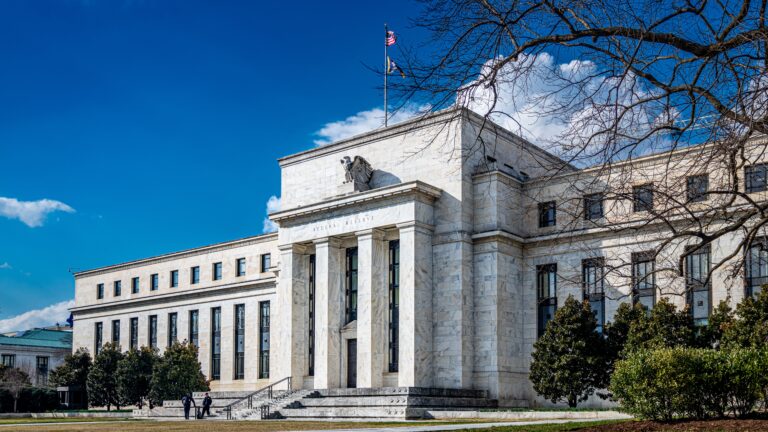

Central Bank Tightening, Tax Reform and Event Risk
Abstract
At the start of each year, we typically name three broad market trends or events that could potentially have the greatest impact on the short-term debt market. For 2018, we think central bank tightening, tax reform and event risk will have the most impact on short-term debt markets. We are generally sanguine about the interest rate and credit spread outlook. What is less clear is how investors will manage a market reversal. We think the demand for institutional cash portfolios to “self-insure” against liquidity events has increased. Treasury professionals should focus on risk diversification and liquidity stratification.
Introduction
2017 turned out to be an unexpectedly blissful year by some standards. A political novice occupying the White House did not lead to the financial market volatility many had predicted, in spite of his unconventional communication style. Britain will leave the European Union, but no other country followed suit. The debt ceiling came and went… and came again, but Treasury issuances were well received. Headline news was dotted with reports of partisan politics, slowing growth in China, terrorism, asset bubbles and rising corporate leverage. Nevertheless, risk assets, interest rates and market liquidity all seem to have held up well.
In 2018, we expect the cumulative effect of monetary policy normalization from the Federal Reserve and other central banks to guide the yield curve higher. Market responses to the tax reform legislation passed in December will also shape the cash investment landscape. As in 2017, we think unknown event risk occupies a very important corner of an increasingly uncertain world.
1. Market Implications from the New Tax Legislation
The hotly contested, highly partisan Tax Cuts and Jobs Act is finally here. The estimated $1.5 trillion tax package that permanently lowers corporate income tax while providing temporary relief to individual taxpayers will touch many corners of the economy and financial markets beyond 2018. In the context of institutional liquidity management and short-term debt markets, we have the following initial reflections.
Moderate impact on Near-term Growth and Policy Rates: Despite Republican leadership’s high hopes and promises of the bill’s jolt to economic growth, economists seem to agree that the uplift will be modest. While bringing corporate profits home and giving households more cash to spend are expected to stimulate the economy, previous tax cuts between the 1960s and 2000s produced mixed long-term results. A December Wall Street Journal survey of economists showed that most forecasters thought growth pickup over the next two years from the tax bill would be moderate1. In her last press conference as Fed Chair, Janet Yellen said the legislation would provide “a modest lift” to the economy and that it would not lead to an acceleration of the Fed’s pace of rate hikes in 20182.
Higher Deficits and Treasury Issuance: The Joint Committee on Taxation (JCT) estimates that the tax law will increase the deficit by $1.5 trillion over 10 years, most of which is front-loaded, with a projected increase of $135.7 billion in 2018. Larger deficits mean correspondingly higher Treasury security issuance. Based on recent Treasury auctions and comments from government officials, nearly half of the new debt supply is expected in Treasury bills. This means that, even without the Fed ratcheting up interest rate hikes, short-term Treasury yields will be under pressure to rise more for the market to absorb higher supply.
Deemed Repatriation Changes Funding and Investment Behaviors: The closely-watched repatriation tax law will subject foreign profits accumulated from 1986 to 2017 to a one-time tax of 15.5% for cash and liquid assets and 8.0% for illiquid assets, higher than the initial Senate plan of 10% and 5%, respectively. Companies can either make payments immediately or defer them over a multi-year period. On the tax front, the estimated $2.6 trillion total offshore profits1 may translate into tax bills of $208-390 billion. How companies pay these bills will influence their liquidity management and financing decisions, and by extension, debt supply and demand dynamics across global markets. While the full impact of cash reshuffling on a grand scale will take years to materialize, we have already observed some cash investors putting their investment decisions on hold pending strategic review.
DOWNLOAD FULL REPORT
Our research is for personal, non-commercial use only. You may not copy, distribute or modify content contained on this Website without prior written authorization from Capital Advisors Group. By viewing this Website and/or downloading its content, you agree to the Terms of Use.
1David Harrison, Economists see three Fed rate rises next year, lower unemployment, The Wall Street Journal, Economy Section, December 12, 2017. https://www.wsj.com/articles/economists-see-three-fed-rate-rises-next-year-lower-unemployment-1513106667
2Binyamin Appelbaum, Fed predicts modest economic growth from tax cut, the New York Times, December 13, 20017. https://www.nytimes.com/2017/12/13/business/economy/fed-interest-rates.html?mtrref=www.google.com
3Many press reports quote the $2.6 trillion figure based on a March 2017 report by Institute on Taxation and Economic Policy that combed through annual report filings of Fortune 500 corporations. https://itep.org/fortune-500-companies-hold-a-record-26-trillion-offshore/
Please click here for disclosure information: Our research is for personal, non-commercial use only. You may not copy, distribute or modify content contained on this Website without prior written authorization from Capital Advisors Group. By viewing this Website and/or downloading its content, you agree to the Terms of Use & Privacy Policy.

